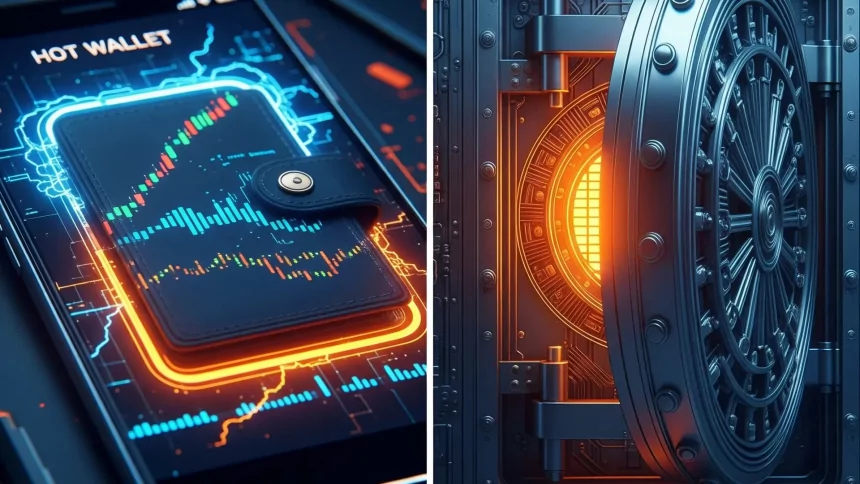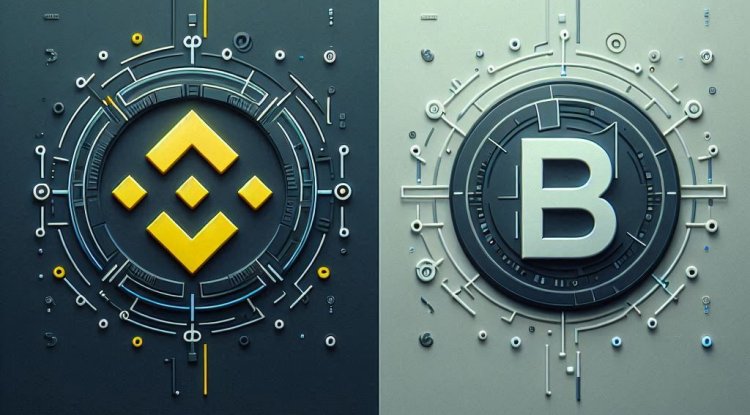How to Choose Your First Crypto Wallet: Hot vs. Cold (2025 Guide)
A no-BS guide to choosing your first crypto wallet. We compare hot (MetaMask) vs. cold (Ledger, Trezor) wallets to help beginners secure their assets.

How to Choose Your First Crypto Wallet: A No-BS Guide to Hot vs. Cold Storage
So, you’ve finally pulled the trigger. You bought your first piece of Bitcoin, snagged some ETH for that NFT you’ve been eyeing, or maybe dipped into a promising altcoin. Congratulations—you’ve made the leap.
Now for the most important question you’ll ask this year: Where are you going to keep it?
If your answer is "on the exchange where I bought it," let's have a little chat. Think of an exchange as a convenient crypto ATM. It’s great for buying and selling, but it’s not a bank vault. Leaving your assets there is like leaving a pile of cash on the counter after you've withdrawn it. It’s not yours—not really.
This is where wallets come in. By the end of this guide, you won't just understand the difference between the major types; you'll know exactly which one is right for you.
The Only Rule That Matters: "Not Your Keys, Not Your Crypto"
Burn this phrase into your memory. It’s the single most important principle in the entire crypto universe.
When your crypto sits on an exchange, they hold the private keys to your funds. A private key is like the master password and signature combined; it's the only thing that proves ownership and allows you to send assets. If the exchange gets hacked, goes bankrupt, or decides to freeze your account (it happens), your funds are at their mercy.
A personal crypto wallet puts you in control of those keys. It’s the difference between storing your gold with a third party versus keeping it in a personal safe. One is a request for access; the other is true ownership.
Now, let's look at the two main types of safes you can choose from.
Hot Wallets vs. Cold Wallets: The Main Event
This isn't as complicated as it sounds. The difference is simple and can be summed up with an analogy.
-
A hot wallet is like your everyday leather wallet. It's connected to the internet, holds the cash you need for daily spending, and is incredibly convenient. But you wouldn't walk around with your life savings in it.
-
A cold wallet is like a high-security safe, bolted to the floor in your basement. It's offline, built for maximum security, and designed to protect your long-term wealth. You don’t open it every day, but you sleep well knowing its contents are secure.
Hot Wallets: The Need for Speed
Hot wallets are software—usually a browser extension or a mobile app. They are always connected to the internet, which is their biggest strength and their greatest weakness.
-
Pros:
-
Convenience: Instant access for trading, spending, and interacting with DeFi apps or NFT marketplaces.
-
Cost: Almost always free to download and use.
-
Accessibility: Perfect for managing small, active amounts of crypto.
-
-
Cons:
-
Vulnerability: Because they're online, they are exposed to a world of digital threats like malware, phishing scams, and viruses.
-
The undisputed king of hot wallets is MetaMask. Think of it as the Swiss Army knife for the Ethereum ecosystem and its many compatible networks. It lives in your browser, allowing you to connect to the decentralized web with a click. For anyone serious about NFTs or DeFi, having MetaMask is non-negotiable.
Cold Wallets: Your Digital Fortress
Cold wallets (or hardware wallets) are physical devices, like a specialized USB drive. They generate and store your private keys completely offline, making them immune to online hacking attempts.
-
Pros:
-
Maximum Security: Your keys never touch an internet-connected computer. Transactions are signed on the device itself, protecting you from any malware on your PC.
-
Total Control: This is the ultimate form of self-custody.
-
Peace of Mind: The gold standard for long-term holding (HODLing).
-
-
Cons:
-
Cost: They aren't free. Expect to pay anywhere from $60 to $200.
-
Convenience: Slightly more effort is required to make a transaction.
-
The two titans dominating this space are Ledger and Trezor. Choosing between them is like picking between a BMW and a Mercedes—both are premium, reliable, and get the job done exceptionally well.
The Contenders: A Head-to-Head Look
Let's break down the go-to options for your first wallet.
MetaMask: The DeFi Gateway
-
Who it’s for: The active user. The NFT collector, the DeFi degen, the person who is swapping tokens and exploring Web3 on a daily basis.
-
The Bottom Line: MetaMask is your portal to the decentralized world. It's fast, flexible, and essential for participation. But its security is only as strong as your computer's security and your own vigilance against scams. Never, ever share your seed phrase with anyone.
Ledger vs. Trezor: The Battle of the Titans
This is the classic crypto rivalry. You can’t go wrong with either, but they have different philosophies.
-
Ledger (e.g., Nano S Plus, Nano X): Think of Ledger as the sleek, modern vault. It uses a special "Secure Element" chip, similar to what's used in high-end credit cards and passports, for maximum physical security. Its Ledger Live app provides an excellent, user-friendly interface for managing your assets.
-
Trezor (e.g., Model One, Model T): Trezor is the original gangster of hardware wallets and a champion of the open-source ethos. Every line of its code is public, meaning the community can verify its security. It’s known for its robust build and straightforward, security-first approach.
Here’s a quick cheat sheet:
So, Which Wallet Should You Choose?
Let’s cut to the chase. Here’s a simple breakdown based on your likely profile:
-
You're a "Beginner HODLer"
-
Your Plan: "I just bought some Bitcoin and Ethereum and plan to hold them for years. I won't be trading much."
-
My Recommendation: Don't hesitate. Buy a Ledger Nano S Plus or a Trezor Model One right now. The ~$70 investment is a tiny price to pay for the absolute security of your assets. This is the smartest decision you can make.
-
-
You're an "Active DeFi/NFT User"
-
Your Plan: "I'm constantly swapping on Uniswap, minting NFTs on OpenSea, and exploring new protocols."
-
My Recommendation: You need a hybrid setup. Use MetaMask as your daily interface, but connect it to your Ledger or Trezor. This gives you the best of both worlds: MetaMask’s seamless connectivity with the cold-storage security of your hardware wallet. Every transaction will require a physical button press on your device, stopping hackers in their tracks.
-
-
You're "Just Testing the Waters"
-
Your Plan: "I have less than a couple of hundred dollars in crypto and just want to learn how it works."
-
My Recommendation: It's okay to start with MetaMask. Use it, learn the ropes, send a few transactions. But the moment your investment grows to an amount you’d be sad to lose, see recommendation #1 and get a hardware wallet.
-
Conclusion: Spend from Hot, Save to Cold
The strategy is simple: hot wallets are for spending, and cold wallets are for saving.
Your first wallet isn't just a tool; it's your first real step into the world of financial self-sovereignty. It's where you take true possession of your digital wealth. Treat that responsibility seriously, invest in the right security from day one, and you’ll be far ahead of the curve.
Now, go secure your future.
Share
What's Your Reaction?
 Like
0
Like
0
 Dislike
0
Dislike
0
 Love
0
Love
0
 Funny
0
Funny
0
 Angry
0
Angry
0
 Sad
0
Sad
0
 Wow
0
Wow
0
















